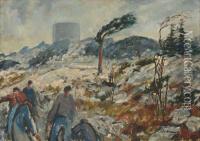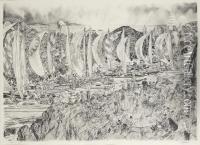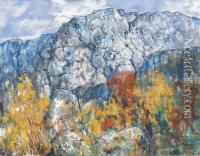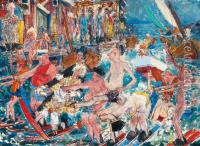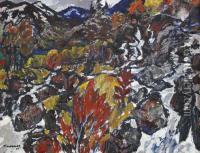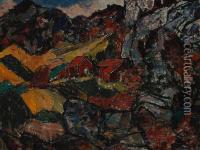Eerik Haamer Paintings
Eerik Haamer was an esteemed Estonian painter, born on February 4, 1908, in Kuressaare, a town on Saaremaa Island, Estonia. He was an artist whose work deeply reflected the landscapes and people of his homeland, capturing the essence of Estonian life, culture, and nature before, during, and after the tumultuous times of the 20th century. His early life on the island, with its unique natural beauty and the hardworking spirit of its inhabitants, profoundly influenced his artistic vision.
Haamer's education in art began at the Pallas Art School in Tartu, Estonia, in the late 1920s, where he was trained in the traditional disciplines of painting and drawing. This institution was pivotal in the development of Estonian modern art, and it provided Haamer with a solid foundation that would inform his work throughout his career. His early works were characterized by a strong emphasis on realism, and he focused particularly on landscapes and portraits, infused with a remarkable sensitivity to light and atmosphere.
The outbreak of World War II and the subsequent Soviet occupation of Estonia had a profound impact on Haamer's life and work. In 1944, like many Estonians, he fled the advancing Soviet forces, eventually settling in Sweden. This period of exile would last for nearly five decades, during which Haamer continued to develop his art, often reflecting on themes of loss, memory, and the longing for his homeland. Despite the distance, the landscapes and people of Saaremaa remained central subjects in his work, serving as poignant reminders of the world he had left behind.
In Sweden, Haamer established himself as a prominent figure in the Estonian émigré community and continued to exhibit his work, both locally and internationally. His paintings from this period are notable for their emotional depth and technical skill, often depicting scenes of Estonian rural life with a nostalgic but unidealized view. The sea, as a symbol of both separation and connection, recurs frequently in his work, reflecting his own life story of exile and the universal theme of longing for one's homeland.
Eerik Haamer passed away on November 27, 1994, in Lund, Sweden. His legacy is preserved through his extensive body of work, which remains a vital part of Estonian cultural heritage. Haamer's paintings are held in high regard for their artistic merit and for their historical significance, offering insight into the Estonian experience of the 20th century. His life and work are celebrated in Estonia and beyond, with his art serving as a bridge between the past and present, and between the homeland and the diaspora.
